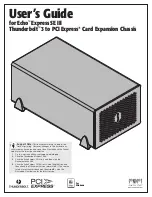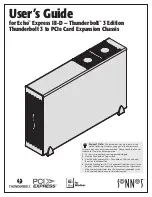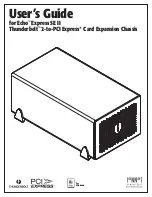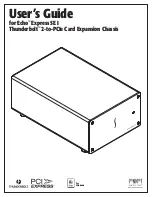
1-3
Cisco ASA Series CLI Configuration Guide
Chapter 1 Configuring IPv6 Neighbor Discovery
Information About IPv6 Neighbor Discovery
If the duplicate address is the link-local address of the interface, the processing of IPv6 packets is
disabled on the interface. If the duplicate address is a global address, the address is not used. However,
all configuration commands associated with the duplicate address remain as configured while the state
of the address is set to DUPLICATE.
If the link-local address for an interface changes, Duplicate Address Detection is performed on the new
link-local address and all of the other IPv6 address associated with the interface are regenerated
(Duplicate Address Detection is performed only on the new link-local address).
The ASA uses neighbor solicitation messages to perform Duplicate Address Detection. By default, the
number of times an interface performs Duplicate Address Detection is 1.
Router Advertisement Messages
An ASA can participate in router advertisements so that neighboring devices can dynamically learn a
default router address. Router advertisement messages (ICMPv6 Type 134) are periodically sent out each
IPv6 configured interface of the ASA. The router advertisement messages are sent to the all-nodes
multicast address.
Router advertisement messages typically include the following information:
•
One or more IPv6 prefix that nodes on the local link can use to automatically configure their IPv6
addresses.
•
Lifetime information for each prefix included in the advertisement.
•
Sets of flags that indicate the type of autoconfiguration (stateless or stateful) that can be completed.
•
Default router information (whether the router sending the advertisement should be used as a default
router and, if so, the amount of time (in seconds) the router should be used as a default router).
•
Additional information for hosts, such as the hop limit and MTU a host should use in packets that it
originates.
•
The amount of time between neighbor solicitation message retransmissions on a given link.
•
The amount of time a node considers a neighbor reachable.
Router advertisements are also sent in response to router solicitation messages (ICMPv6 Type 133).
Router solicitation messages are sent by hosts at system startup so that the host can immediately
autoconfigure without needing to wait for the next scheduled router advertisement message. Because
router solicitation messages are usually sent by hosts at system startup, and the host does not have a
configured unicast address, the source address in router solicitation messages is usually the unspecified
IPv6 address (0:0:0:0:0:0:0:0). If the host has a configured unicast address, the unicast address of the
interface sending the router solicitation message is used as the source address in the message. The
destination address in router solicitation messages is the all-routers multicast address with a scope of the
link. When a router advertisement is sent in response to a router solicitation, the destination address in
the router advertisement message is the unicast address of the source of the router solicitation message.
You can configure the following settings for router advertisement messages:
•
The time interval between periodic router advertisement messages.
•
The router lifetime value, which indicates the amount of time IPv6 nodes should consider the ASA
to be the default router.
•
The IPv6 network prefixes in use on the link.
•
Whether or not an interface transmits router advertisement messages.
Unless otherwise noted, the router advertisement message settings are specific to an interface and are
entered in interface configuration mode.
Summary of Contents for 5505 - ASA Firewall Edition Bundle
Page 28: ...Glossary GL 24 Cisco ASA Series CLI Configuration Guide ...
Page 61: ...P A R T 1 Getting Started with the ASA ...
Page 62: ......
Page 219: ...P A R T 2 Configuring High Availability and Scalability ...
Page 220: ......
Page 403: ...P A R T 2 Configuring Interfaces ...
Page 404: ......
Page 499: ...P A R T 2 Configuring Basic Settings ...
Page 500: ......
Page 533: ...P A R T 2 Configuring Objects and Access Lists ...
Page 534: ......
Page 601: ...P A R T 2 Configuring IP Routing ...
Page 602: ......
Page 745: ...P A R T 2 Configuring Network Address Translation ...
Page 746: ......
Page 845: ...P A R T 2 Configuring AAA Servers and the Local Database ...
Page 846: ......
Page 981: ...P A R T 2 Configuring Access Control ...
Page 982: ......
Page 1061: ...P A R T 2 Configuring Service Policies Using the Modular Policy Framework ...
Page 1062: ......
Page 1093: ...P A R T 2 Configuring Application Inspection ...
Page 1094: ......
Page 1191: ...P A R T 2 Configuring Unified Communications ...
Page 1192: ......
Page 1333: ...P A R T 2 Configuring Connection Settings and QoS ...
Page 1334: ......
Page 1379: ...P A R T 2 Configuring Advanced Network Protection ...
Page 1380: ......
Page 1475: ...P A R T 2 Configuring Modules ...
Page 1476: ......
Page 1549: ...P A R T 2 Configuring VPN ...
Page 1550: ......
Page 1965: ...P A R T 2 Configuring Logging SNMP and Smart Call Home ...
Page 1966: ......
Page 2059: ...P A R T 2 System Administration ...
Page 2060: ......
Page 2098: ...1 8 Cisco ASA Series CLI Configuration Guide Chapter 1 Troubleshooting Viewing the Coredump ...
Page 2099: ...P A R T 2 Reference ...
Page 2100: ......
















































